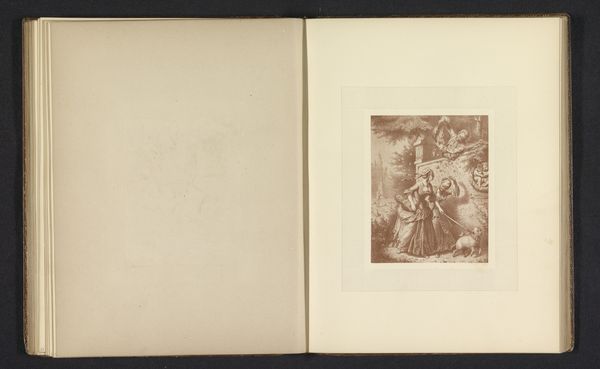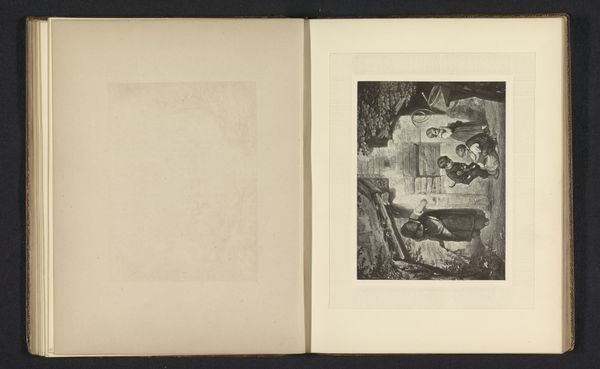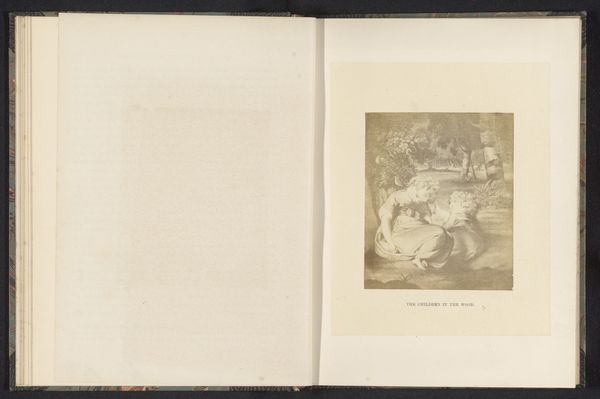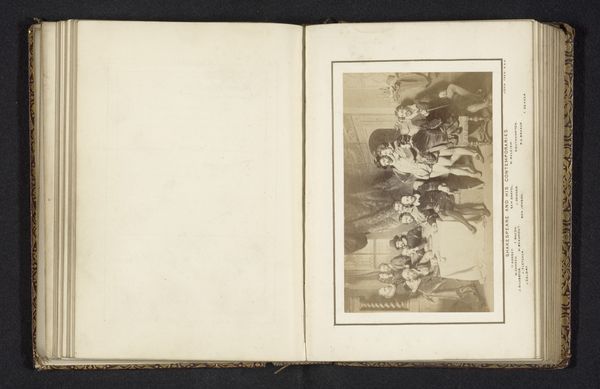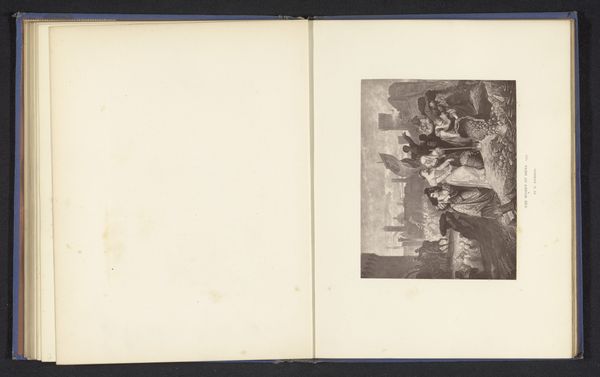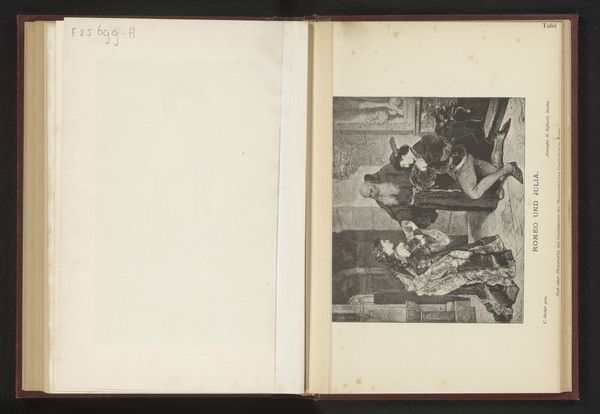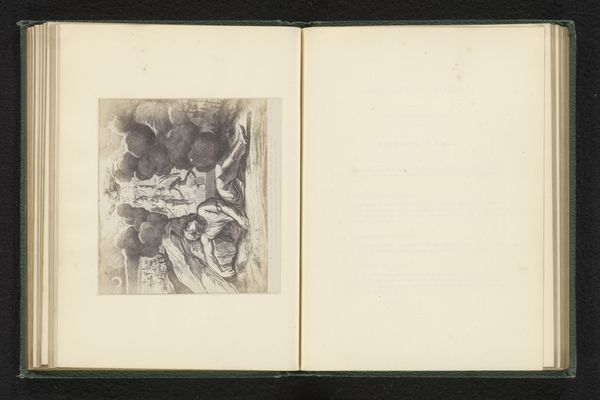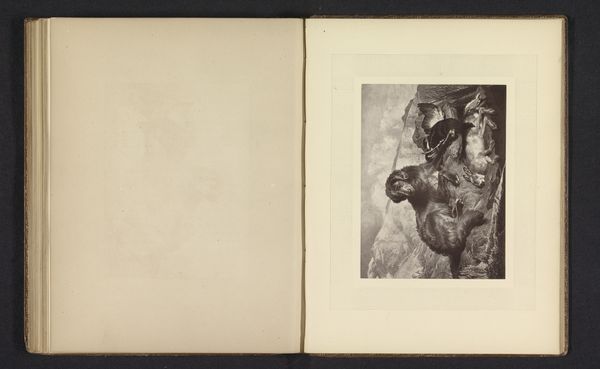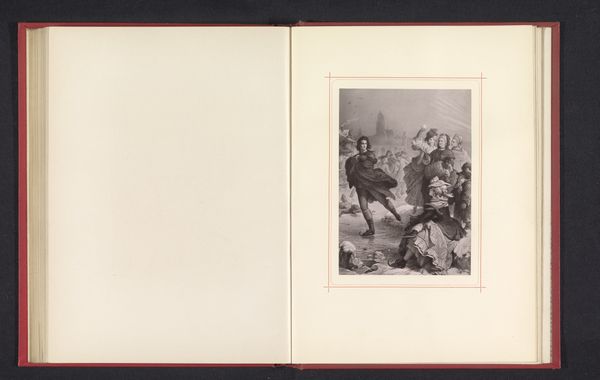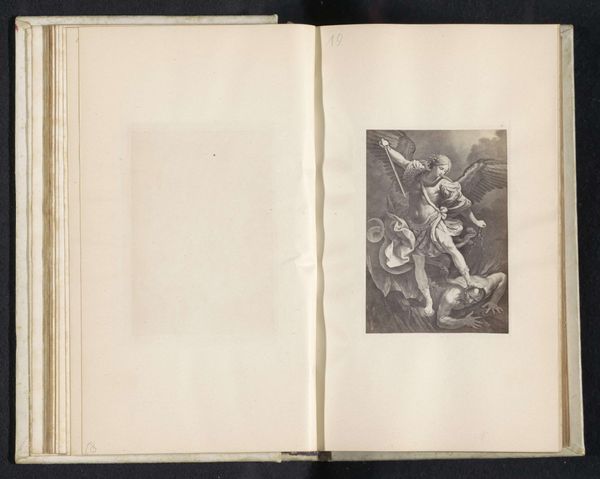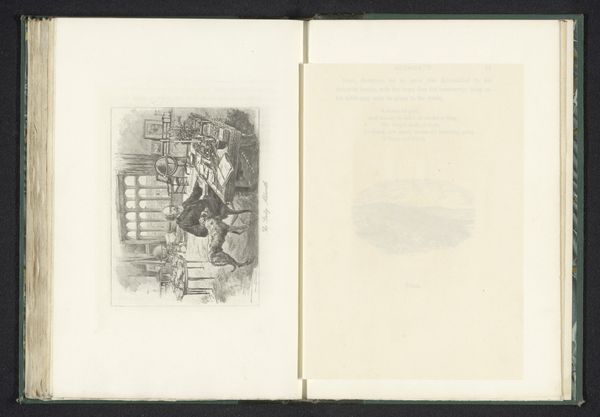
Fotoreproductie van een prent naar een schilderij met een blinde doedelzakspeler en dansende kinderen door John Frederick Tayler before 1874
0:00
0:00
Dimensions: height 121 mm, width 161 mm
Copyright: Rijks Museum: Open Domain
Curator: Immediately, there's something almost dreamlike in the swirling movement of the children, contrasted with the anchored figure of the piper. A certain joyous innocence pervades the image, doesn’t it? Editor: It does. This is a photographic reproduction of an engraving after a painting by John Frederick Tayler titled "Fotoreproductie van een prent naar een schilderij met een blinde doedelzakspeler en dansende kinderen". It dates from before 1874. Knowing Tayler worked during a time of burgeoning social reform, one must ask: does this "joyous innocence" serve a more complex purpose? Curator: How so? It reads as a rather straightforward celebration of communal joy, a charming scene. The very setting, within what looks like a modest interior, contributes to the overall feeling of accessible, everyday happiness. Editor: But consider the piper – blind. Disability, poverty, childhood: all elements laden with social and political implications in Victorian England. Is this a romanticized view, a commentary, or something more critical? Where is this scene meant to exist within England’s rapidly modernizing culture? Curator: An interesting question! Certainly, the Romantics were often engaged in both an idealized vision of simpler times and a simultaneous critique of industrial society's alienation. Perhaps Tayler attempts to evoke sympathy through sentimentality and a touch of othering: this timeless village versus an urban society Editor: Exactly! And is it a critique of or is he placating audiences seeking comfort in nostalgia rather than real progress? Also, is the community meant to signal any implicit inclusion and exclusion; this idyllic portrayal likely only includes able-bodied children from white, Christian homes, erasing diversity of experience and background in its nostalgic look back. Curator: A crucial point! The print is indeed more than a snapshot of merriment. Your insights truly force me to reconsider my initial reading, understanding how such representations can perpetuate limiting narratives through omission. Editor: Precisely. Context is crucial to analyzing the artistic goals and the social impact of the artist, particularly of something so ubiquitous in its own era as an illustrative engraving for middle-class audiences. The photographic record can allow us access today but this does not excuse a critical lense. Curator: Understanding art history as part of a larger historical project illuminates art making as part of social reality. Thanks to these kinds of reflections, such a visual artwork offers opportunities to uncover deeper layers, sparking conversations about art's complex relationship with power and cultural representation. Editor: Absolutely. Even a seemingly innocent scene invites us to engage with deeper critical consideration!
Comments
No comments
Be the first to comment and join the conversation on the ultimate creative platform.
